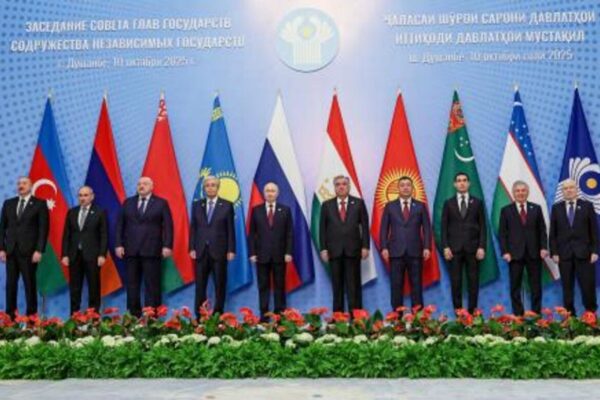Current Trends in Silver Price Surges and Market Analysis
Silver Price Trends Overview
Recent trends in silver prices have illustrated a significant upward trajectory that many analysts attribute to the interplay of various market dynamics. One notable factor is the increasing demand for silver in industrial applications, particularly renewable energy sectors such as solar power. As global economies pivot towards sustainable solutions, silver’s role as a key component in technologies like solar panels is likely to bolster its value.
Additionally, geopolitical tensions and economic uncertainties have historically influenced precious metals as safe-haven assets. Surges in silver prices often coincide with market volatility, providing investors with an opportunity to hedge their risks. "Investing in precious metals can be a stabilizing factor during turbulent times," notes an analyst from HSBC who recently revised their outlook on silver prices due to these geopolitical factors and expectations of strength from gold markets source.
Furthermore, industry experts suggest monitoring key economic indicators such as inflation rates and interest rates that impact investment decisions related to silver. For those keen on understanding the broader implications of leadership practices within organizations affecting market trends, resources such as Transformative Leadership Practices of the Target CEOmight provide valuable insights.
Market Influences on Silver Value
Various factors influence the value of silver, making it an intriguing element in the investment landscape. Economic indicators, such as inflation rates and currency strength, play critical roles in determining silver prices. For instance, when inflation rises, investors often flock to silver as a hedge against currency devaluation. Conversely, stronger economic conditions can lead to reduced demand for precious metals as investors may favor equities. Additionally, industrial demand significantly impacts silver value; about 50% of silver demand comes from industrial applications, including electronics and solar panels.
Another essential aspect is the movement of global markets. As seen in the silver price charts, fluctuations in stock markets often correlate with changes in silver prices. Political instability can also drive investors toward safe-haven assets like silver, affecting its market performance. Lastly, institutional investing and speculative trading can create volatility in prices as market sentiments shift rapidly.
In summary, understanding these influences equips prospective investors with valuable insights into navigating the complex landscape of silver investments and helps them make informed decisions based on current market dynamics. For a deeper dive into the characteristics of silver as an investment, refer to this resource.
Expert Insights on Silver Pricing
Understanding silver pricing requires a multifaceted approach. Experts note that various elements, such as industrial demand and investment trends, significantly influence current values. For instance, the push towards renewable energy has heightened the need for silver in solar panels and electronics, directly impacting its demand. Additionally, global economic conditions play a crucial role; during periods of uncertainty, investors often flock to silver as a safe haven. Insights from market analysts suggest that monitoring these trends can provide strategic advantages. For a deeper analysis of silver prices and their movements, you may consider visiting Silver Priceor Gold Pricefor comprehensive data and forecasts. By evaluating these factors, investors can make informed decisions that align with market dynamics and personal investment goals.
Analyzing Recent Silver Surges
Recent trends have shown a notable increase in silver prices, influenced by several market factors. These surges can often be traced back to fluctuations in investor sentiment, particularly during periods of economic uncertainty. For instance, as inflation rises or geopolitical tensions escalate, many turn to silver as a safe-haven asset, which drives the demand and subsequently the price higher. Additionally, industrial demand for silver—especially in sectors such as electronics and solar energy—has contributed to these recent spikes. Tracking price movements on platforms like APMEXand BullionVaultcan provide deeper insights into these dynamics. This continuous interplay between supply chain developments and market behavior serves as a critical area of focus for investors looking to navigate these surges effectively.
Investment Strategies for Silver
When investing in silver, it is essential to adopt a multi-faceted approach that accounts for market volatility and trends. Diversifying one’s portfolio by allocating a specific portion to silver can mitigate risks associated with market fluctuations. Investors should consider both physical silver, such as coins and bars, and financial products like exchange-traded funds (ETFs) that track silver prices. Staying informed about current market dynamics is crucial; resources such as Monexoffer real-time silver prices and trends, aiding in timely decision-making. Additionally, utilizing tools like the Sterling Silver Scrap Calculatorcan provide insights into the potential value of existing assets. Awareness of external factors—such as industrial demand and geopolitical events—can also guide investment timing and strategy, ensuring investors are well-prepared to navigate the changing landscape of the silver market.
Forecasting Future Silver Trends
Looking ahead, several factors are likely to shape the future trends of silver prices. Market analysts anticipate that increased industrial demand, particularly in renewable energy technologies and electronics, could support price growth. Additionally, geopolitical tensions and inflation rates are also expected to influence investor sentiment toward precious metals. As more individuals seek to diversify their portfolios, silver may become a more attractive option compared to traditional investments. Moreover, shifts in global monetary policies could have significant ramifications on the silver market, affecting both supply and demand dynamics. Understanding these elements will be crucial for investors aiming to navigate the evolving landscape of silver pricing effectively.
Global Factors Affecting Silver Prices
Silver prices are influenced by a variety of global factors that can significantly impact market dynamics. One primary factor is the economic conditions in major economies, particularly the United States, China, and India. When these economies experience growth, industrial demand for silver tends to increase, driving up prices. Additionally, geopolitical tensions can create uncertainty in global markets, often resulting in investors turning to silver as a safe haven asset. Currency fluctuations also play a crucial role; for instance, a weakening U.S. dollar typically leads to higher silver prices as commodities become cheaper for investors using other currencies. Furthermore, changes in technology and increased demand from sectors such as electronics and renewable energy can further shape price trends. Understanding these global influences is essential for navigating the complexities of silver investments effectively.
Assessing Risk in Silver Investments
Investing in silver involves inherent risks that can significantly impact portfolio performance. Firstly, market volatility plays a crucial role; fluctuations in silver prices can be influenced by economic indicators, geopolitical events, and changes in industrial demand. Investors must remain vigilant about these factors, as they can lead to sharp price movements. Additionally, liquidity risk is essential to consider; since silver markets may not always have the same trading volume as gold or other commodities, selling at favorable prices can be challenging. It is also critical to evaluate currency risk, particularly if investments are made in international markets where currency fluctuations may affect overall returns. Lastly, thorough research and understanding of market trends will help investors make informed decisions and mitigate potential risks while navigating the complexities of silver investments.
You may also like

「CISプラス」創設で合意 プーチン氏ら、旧ソ連の首脳会議

Impact of the De Minimis Exemption on U.S. Imports Explained

You may be interested
Transformative Leadership Practices of the Target CEO
Transformative Leadership Skills Transformative leadership skills are essential in today's...
Experience the Unique Charm and Thrills of Jackson Hole
The Enchantment of Jackson Hole Nestled amidst the breathtaking Teton...
Walmart Stock Performance Insights and Future Outlook
Walmart Stock Historical Trends Walmart's stock performance has displayed a...
 The New York Times
The New York Times
- Zelensky Says Revised U.S. Plan Still Calls for Ukraine to Leave Donbas 2025 年 12 月 11 日 Maria Varenikova
- Can OpenAI Respond After Google Closes the A.I. Technology Gap? 2025 年 12 月 11 日 Cade Metz and Mike Isaac
- This Isn’t the First Time the Fed Has Struggled for Independence 2025 年 12 月 11 日 Jeff Sommer
- Disney Agrees to Bring Its Characters to OpenAI’s Sora Videos 2025 年 12 月 11 日 Brooks Barnes and Cade Metz
- Lecturer Sanctioned Over MAGA White Supremacy Lesson Is Back in Class 2025 年 12 月 11 日 Stephanie Saul
- Best Comedy of 2025 2025 年 12 月 11 日 Jason Zinoman
- 100,000 in Washington State Ordered to Evacuate as Rivers Rise 2025 年 12 月 11 日 Anna Griffin, Amy Graff and Drew Atkins
- Ford’s Car of the Future, Hatched in a Skunk Works Near Los Angeles 2025 年 12 月 11 日 Jack Ewing
- Nobel Peace Prize Winner Machado Says U.S. Helped Her Leave Venezuela 2025 年 12 月 11 日 Anatoly Kurmanaev and Henrik Pryser Libell
- Bulgaria’s Prime Minister Resigns in the Face of Mass Protests 2025 年 12 月 11 日 Lara Jakes and Boryana Dzhambazova
Leave a Reply